No Results Found
The page you requested could not be found. Try refining your search, or use the navigation above to locate the post.

Have you been wondering lately how to improve customer engagement?
It’s no surprise that most of us wish we could improve customer engagement within our companies. But how do we do it? Is there a secret ingredient to figuring out how to improve customer relationships with our business?
There’s not! But there are ways to improve customer engagement based on changing a few things with our businesses.
Want to know how? Keep reading to learn our top tips for the best ways to improve customer engagement.
The only way to understand how our company is doing is to track the analytics of our social media platforms and our website.
By looking at data analytics, we can better understand the type of behaviors our customers exhibit, their preferences, recurring trends, and what types of advertisements work.
From there, we can decide what type of ads to use more often and which to do away with. Customer assistance can also change based on how customer engagement is going and what we see based on the analytics.
Almost 60% of businesses worldwide invest in data analytics tools to track how they are doing and how to improve customer engagement on a consistent basis.
Data analytics can be used to track how past advertisements and promotions went and what can be repeated as a means of engaging customers. Analytics can also help track email opens, lead generations, website clicks, social media engagement, and so much more.
Tracking all parts of customer engagement technology and analytics is crucial to understanding what is working. This is also a way to understand what is not working to save money long-term.
If we are searching to be the best company we can be when it comes to improving customer engagement, what better way to do than ask for feedback from the customers themselves?
When we ask for feedback, we’re hearing directly from the sources themselves about what needs to be improved, what changes they wish to see, and anything else they want us to know.
So how can we get the feedback we want? There are a few ways:
After customer support calls, a survey could be sent out to the customer to learn about their experience with the company.
There are other ways to ask for feedback as well, these are just a few.
Based on all feedback we receive, we need to make the changes in order to satisfy our customers and improve the relationships we have with them.
More likely than not, every business has a competitor. Our is no different.
However, customers choose to work with businesses based on the support they feel and what they feel they align with more. In reality, there may not be much else that is different from two competing companies, or three, or four.
To make sure we stay on top of our customer experience, paying close attention to competition can drastically improve customer engagement.
How? Seeing what others do can help us understand what we could be doing better. It could also inspire us or motivate us to do something differently that customers may like better or resonate with more.
In our digital world, it can be hard to keep up with the ever-changing technology that presents itself. And that’s okay. But what we do need to ensure we do is keep up with some of the technology that will help improve customer experiences with the company.
As mentioned before, one of these pieces of technology would be data analytics tools. Another would be using software that can automate some of the processes the company uses.
For instance, email can be set on automation so that other things can be done. By automating emails, the customer experience will improve because they are already ready to be sent and will automatically send when an action is completed by a customer.
If someone comes across the company’s website, we don’t want them to feel lost or have any questions go unanswered. Using virtual agents is one way to ensure that we interact with customers as much as possible. When customers know they can head to a website and receive the answers they are looking for right away, the overall customer experience improves, and they are more likely to come back again.
The software used by each company may depend on the type of solutions that are needed. A retail company is going to need a different experience than a finance company for their customers. By tailoring it to the “type” of customer that we have, it is more likely that our customers have a better customer experience.
One of the most important areas of business is satisfying customers. Without them, a business cannot thrive and grow like we hope it will.
So how do we ensure our customer experience is the best it can be? By using these tips for customer engagement, our businesses can improve customer relationships and the customer experience exponentially.
Ready to try this out? Check out our different software solutions to see which one fits best! You can also contact us for any questions!
Transform your business
The page you requested could not be found. Try refining your search, or use the navigation above to locate the post.
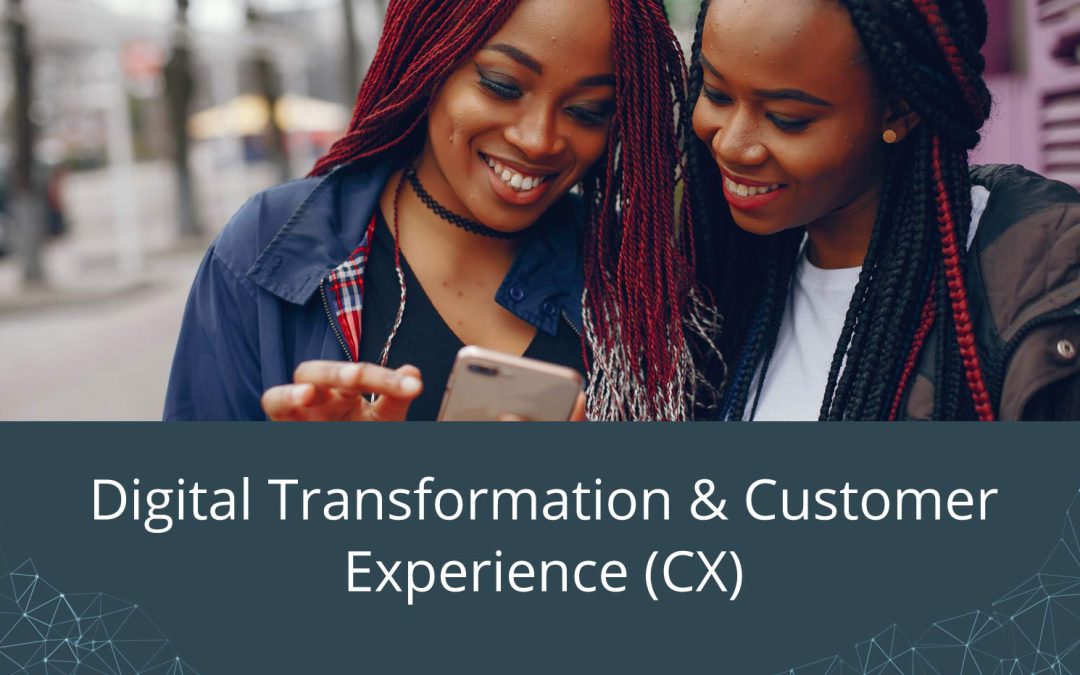
Consumer habits have changed as a result of new, more accessible digital technologies.
Businesses must now focus on providing more personalized services. These personalized services communicate with and serve their customers better. Businesses must determine how to digitize in a way that meets the demanding and ever-changing needs of the customer.
Your company might undergo a digital transformation for a variety of reasons. For certain, the biggest factor is survival.
Do you want to know more about digital transformation and what this means for customer and personal experiences? Read on to learn more.
Because digital transformation looks different for every organization, there is no single definition. With so many publications and definitions of digital transformation available, it’s easy to see why the topic is confusing.
Digital transformation is, in its most basic sense, the use of digital technologies to improve and optimize the customer experience.
Businesses that try to understand their consumers in the digital age are transforming. This means investing in new technologies and business models that prioritize the customer experience.
Because digital transformation looks different for every organization, there is no single definition. With so many publications and definitions of digital transformation available, it’s easy to see why the topic is confusing.
Digital transformation is, in its most basic sense, the use of digital technologies to improve and optimize the customer experience.
Businesses that try to understand their consumers in the digital age are transforming. This means investing in new technologies and business models that prioritize the customer experience.
79% of corporate strategists claim to be digitizing their businesses to generate new income. To date, the transformation has been slow, with less than half of surveyed companies claiming to be fully digital.
We live in a digital, global, and hyper-connected world marked by social and technological change. There is a constant emergence of:
These exert significant influence. Today, digital transformation is not an option. It is necessary to leave one’s comfort zone, reinvent oneself, and compete in a world dominated by technological advances.
Studies have shown that companies that have embraced digital transformation are 26% more profitable than their competitors!
Companies that digitally transform create engaged customers, who are:
One thing is certain – the customer is in the driver’s seat. In order to provide a better customer experience, you must first understand who this new digital customer is.
Before you start improving the customer journey, there are a few things you need to reflect on. A digital-first approach requires you to rethink how your business interacts with customers and users.
The 3 focus areas should be:
You should be able to contact your customers instead of waiting for them to call you. Your clients’ demand (expect) highly focused communications, which can only be delivered through a data-driven approach.
You no longer have to wait for a phone call or fax. Digital-first isn’t about the reaction. It’s about being proactive in helping your clients, who use a variety of channels. Customer service today includes social media, review sites, forums, and communities.
Changing technologies and breakthroughs have accelerated business world change. Every year, new technologies even disrupt the most established businesses.
Companies need a long-term strategy to adapt, compete, and thrive in this new digital landscape. You need a strategy that addresses both technology adoption and digital disruption. Understanding your basic systems and processes is crucial to identifying opportunities before embracing digital transformation.
With customers gaining control over how businesses deliver experiences, it’s time to create new ones that meet their needs. According to a poll, customer experiences are the top priority for 40% of respondents.
Because every interaction with a customer influences their overall perception of a brand, focusing on connections with customers is key.
Consumers today expect businesses to know their specific preferences and buying history. According to Accenture, 75% of customers choose companies that:
The good news is that customers are comfortable for businesses to use their data to improve their experience.
But you need to invest in CRM. Whatever industry you may be in, there is no better time to take advantage of this opportunity.
Without CRM, you can’t treat customers like people. It’s impossible to deliver a unique experience without storing their interactions with your firm.
A CRM system allows you to evaluate and examine client data based on accessible customer data. For example, general queries, product quotations, and support inquiries might help you understand their needs. Because users’ experiences are more tailored, this data can be leveraged to develop highly targeted messaging.
Customers can now get what they want when they want, and how they want it thanks to advances in technology.
More than half of all consumers now expect a response from customer service within one hour. They also expect the same response times on weekends as they do during the week. Because of this need for instant gratification, organizations must be available and on-demand 24 hours a day, seven days a week.
Everything is now happening in real-time, so businesses that can provide their customers with immediacy, personalization, and accessibility.
It’s also important to remember that consumers today aren’t tied to a single channel. They purchase in-store, online, provide feedback via mobile apps, and ask inquiries on social media.
Agile innovation methods have completely transformed information technology. Over the last 25 to 30 years, they have significantly increased software development success rates, as well as improved quality and speed to market, and the motivation and productivity of IT teams.
Traditional organisations were designed for “stability in a well-known environment.” “Technologically Agile” organisations, on the other hand, are constantly evolving and have the flexibility to adapt quickly to a changing environment. This adaptability is especially important in a world where digital technologies are altering the fundamentals of how businesses interact with their customers.
The modern consumer expects instant gratification – I want service and I want it now!
These new digital technologies have shifted customer expectations, resulting in a new breed of modern buyers. Consumers today are always connected, app-native, and aware of what technology can do for them.
Customers frequently rate organizations based on their digital customer experience first. They say good news travels fast and bad news travels even faster and so does the personal experiences of your customers. People talk to each other all the time, continuously sharing experiences and opinions – customer service is not immune to this!
To make use of the correct approach and leverage new digital technologies, Find out how right here.
Transform your business
The page you requested could not be found. Try refining your search, or use the navigation above to locate the post.


Do you want your manufacturing organization to take advantage of predictive analytics?
If you answered yes, then get ready to learn about how Microsoft Dynamics 365 can help manufacturers. This article will share the latest in manufacturing processes. We’ll cover the benefits from supply chain management to customer service.
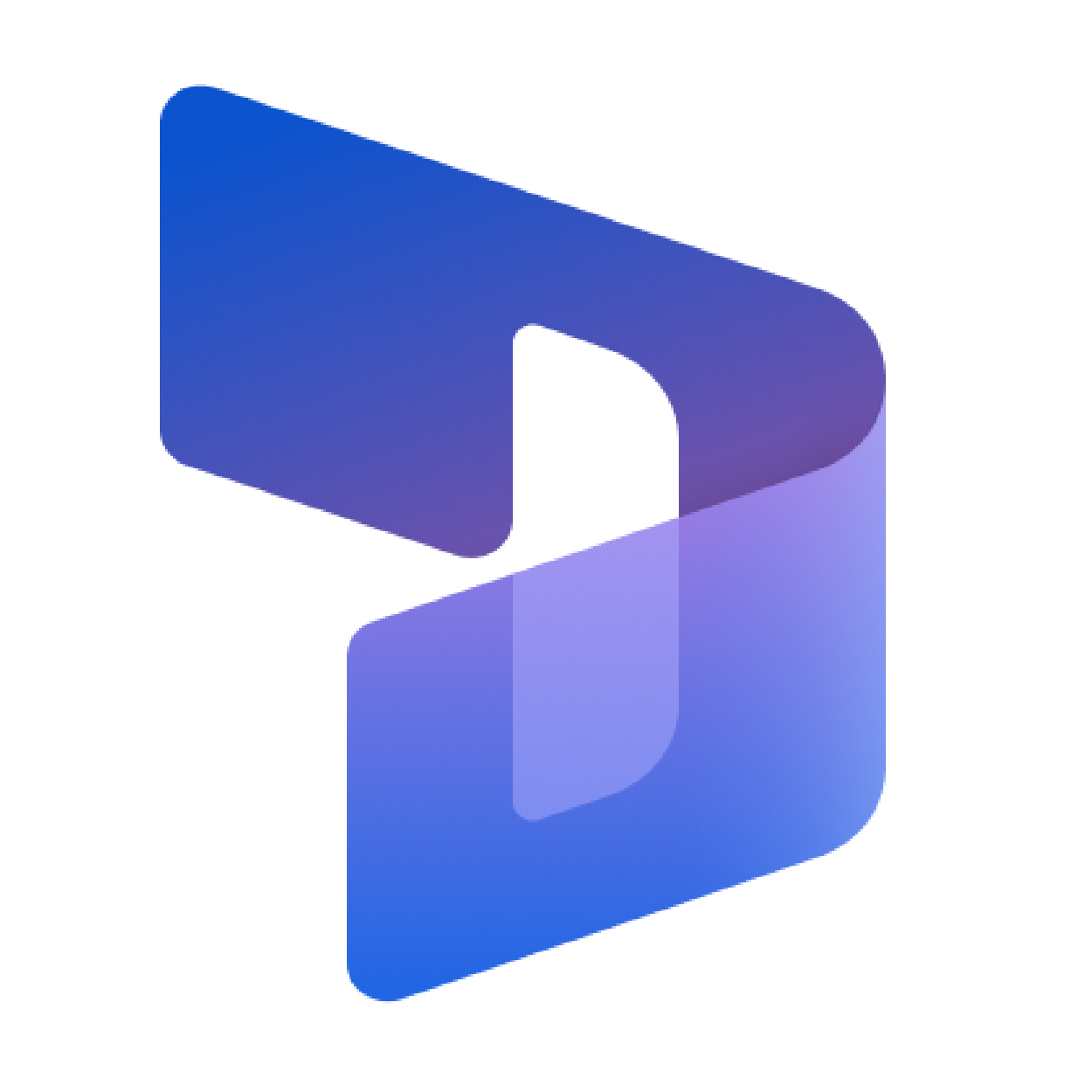
Microsoft Dynamics 365 is an integrated, data-driven software solution. It helps manufacturers shorten and optimize their sales cycle. In addition, the tools empower a personalized customer service experience and enhance customer loyalty.
This tool strengthens customer relationships with the manufacturer. It also centralizes, optimizes, and streamlines the customer’s experience data. Some of the benefits include:
Dynamics 365 transforms the customer’s journey into a great buying experience. This documented experience empowers sales, marketing, customer service, and customer insights.
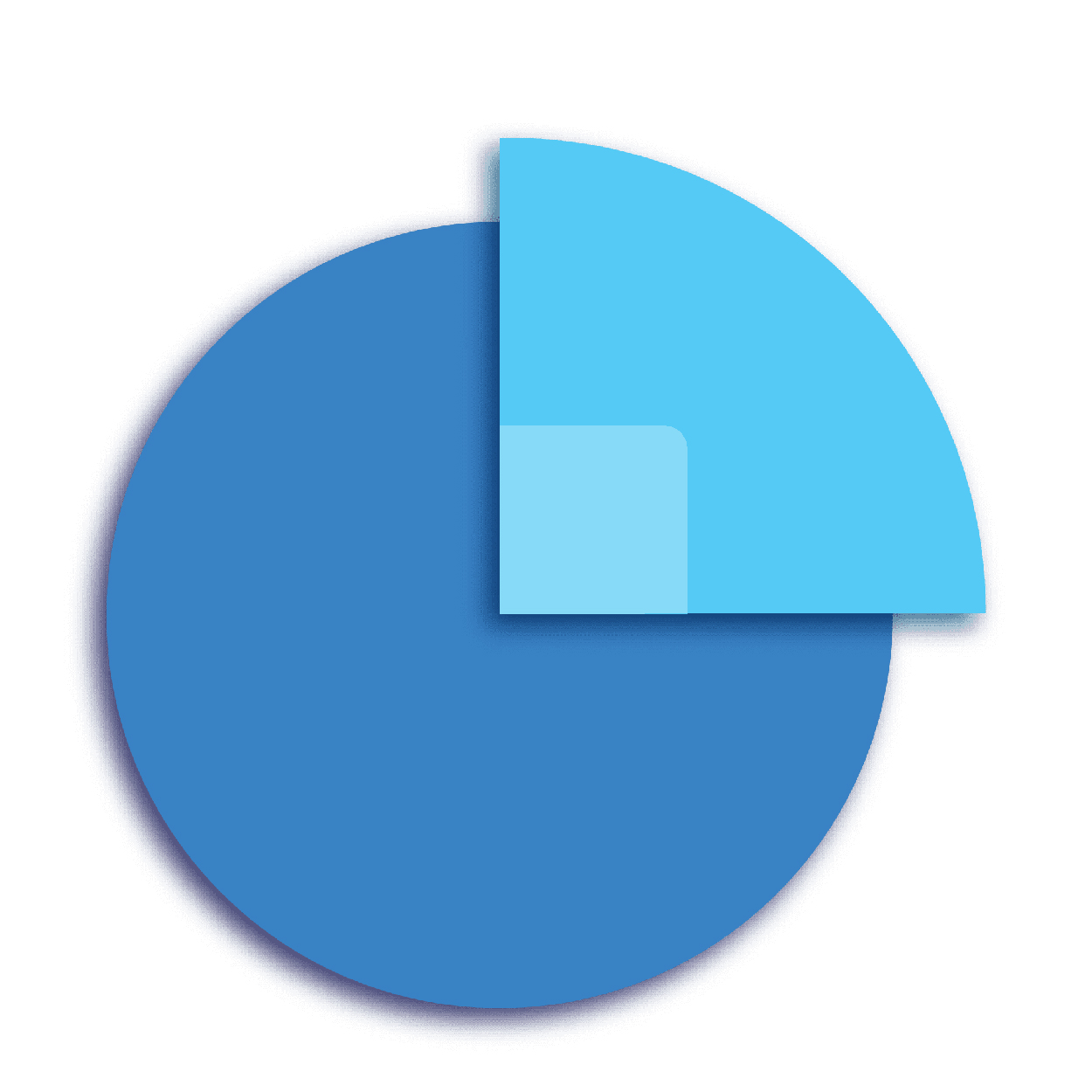
Microsoft Dynamics 365 connects salespeople to customers through their preferred selling and communication channel. The software’s AI can shorten the sales cycle with suggested best action steps. These steps focus on the highest-priority activity that has the most significant potential to close.
The system also predicts revenue fluctuations. When addressing the funnel, the system highlights the customers needing attention from the salesperson.

The software supports the marketing team in finding and nurturing the right leads. The unit can focus on the latest trends and create a connected customer experience. The experience is a personalised journey that strengthens relationships and builds loyalty.
For a holistic experience, marketing, sales, commerce, and services impact the customer journey. Marketing can use AI-driven content recommendations to enhance the experience. Also, the AI provides relevant actions for customer segmentation, channels, and analytics.
Microsoft Dynamics 365 connects with other tools most marketing departments use. The built-in features protect the customer data and provide the information needed for personalisation. The best part is its ability to customise the experience journey.
The marketing team will also enjoy the predictive, design, and delivery aspects of the tool.

Customer service employees will appreciate the connected experience. Before a customer connects to a customer service employee, they’ll have the choice of working with an automated self-service module. This module uses virtual agents and a portal to a deep knowledge base.
For those customers wanting to speak with a live person, the AI productivity tools take the guesswork out of case resolution. The system provides the correct information at the right time. Also, AI insights and analytics improve the customer and agent experience.

Microsoft Dynamics 365 provides everything needed to optimise resources that help improve the technicians’ efficiencies. The result includes reduced operational costs. Most of these savings come from the team being more proactive.
The system provides predictive services that can prevent many reactive situations from happening.

Operational expenses decrease by using the system along with the simplification of financial complexities. These successful results come from AI-driven insights.
The fine-tuning of the financial controls generate reports and embedded analytics to keep the team on task. The automated processes also reduce the time needed for financial reporting.
Microsoft Dynamics 365 can also watch financial performance and budgets. The automated tasks boost productivity to maximise financial performance. Regulatory reporting and financial planning also take advantage of the AI process.
The system uses rule-based charts, a no-code configuration process, and automated tasks to boost productivity. In addition, this solution connects to electronic invoicing and global payments.
Supply chain management uses predictive operations. As a result, the manufacturing process gets simplified and automated. Also, the system extends the life of the assets.
Managing the process in the cloud helps ensure business continuity.

Microsoft Dynamics 365 provides the ability for customers to connect when, how, and where they want on any device. The system creates a consistent engagement across both online and offline channels. You also get a comprehensive view of your customers and partners.
The process uses a unified commerce platform to foster relationships. The solution scales to meet your needs both on the vendor and consumer sales side. The user-friendly applications create a friction-free retail experience.
The infusion of AI plays a role in your ability to scale commerce solutions. This ability drives a strong ROI and supports the optimisation of business practices.
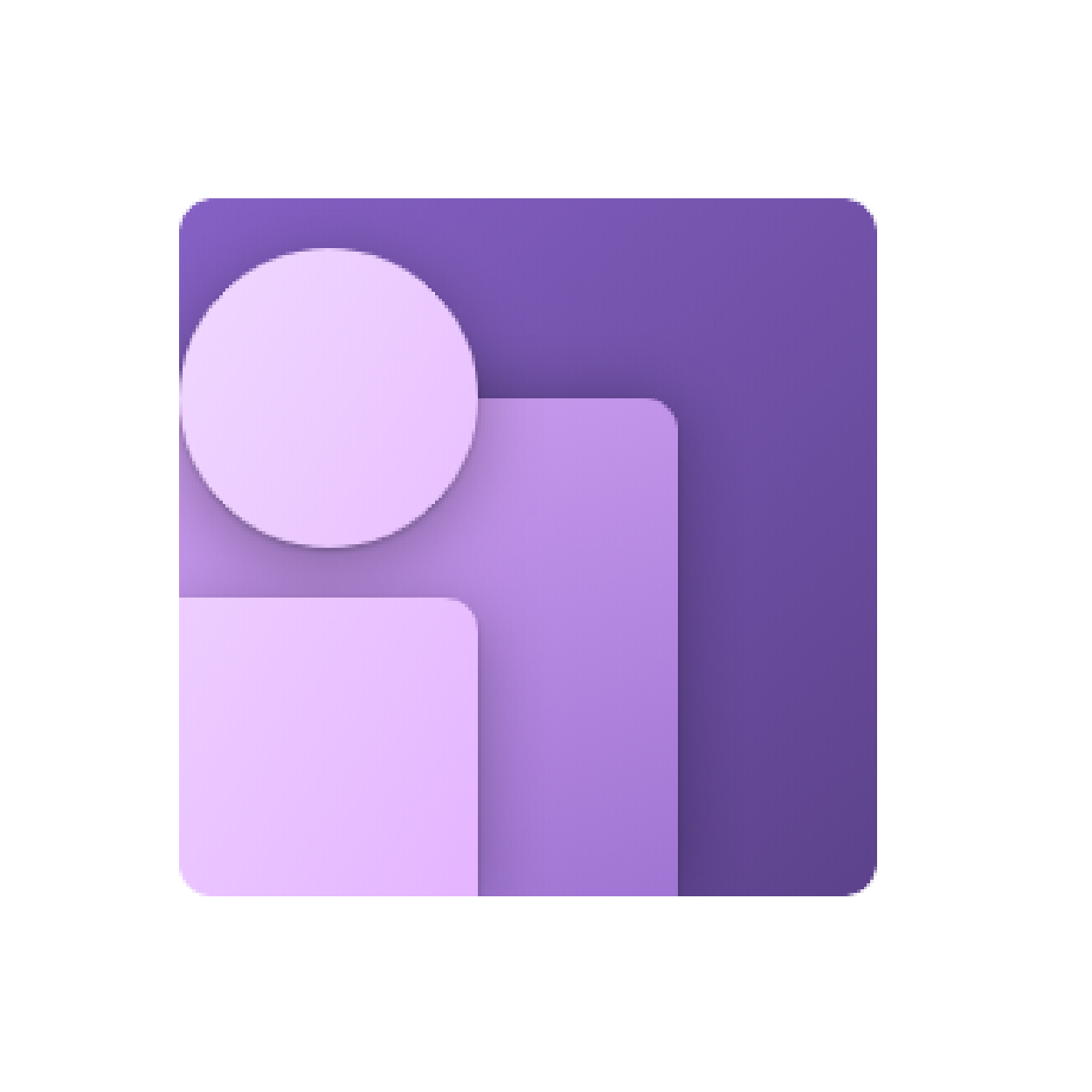
Self-service HR tools provide empowerment for employees to get the information they need when they need it. The data can include:
This process frees up HR professionals to handle complex and urgent issues.
The HR solution is scalable, so it grows as your company grows. The system also connects with partnering systems to centralise the information.
The result is better decision making and happy employees.
Microsoft Dynamics 365 brings insight into operations that allow you to cut expenses. This focus inspires positive change in operations to address optimization. It also impacts change with shortened processes and cost-cutting.
This means you can improve on time to market.
The tool also helps with collaboration so teams can improve:
Dynamics 365 allows you to reinvent a product. This might come from innovation or the development of a new product based on a shift in the market. The system gives you the agility and needed information to stay in the game
Microsoft Dynamics 365 provides real-time insight. Manufacturing organizations can also capitalize on predictive analytics. Plus, machine learning fuels the communication between CRM and ERP systems.
The manufacturing industry can now provide every employee with customer service answers. In addition, the manufacturing processes can also transform with real-time data during production.
Contact us if you’re ready to learn more about the intelligent platform. Also, check out our other blog posts on similar topics.
Transform your business
The page you requested could not be found. Try refining your search, or use the navigation above to locate the post.
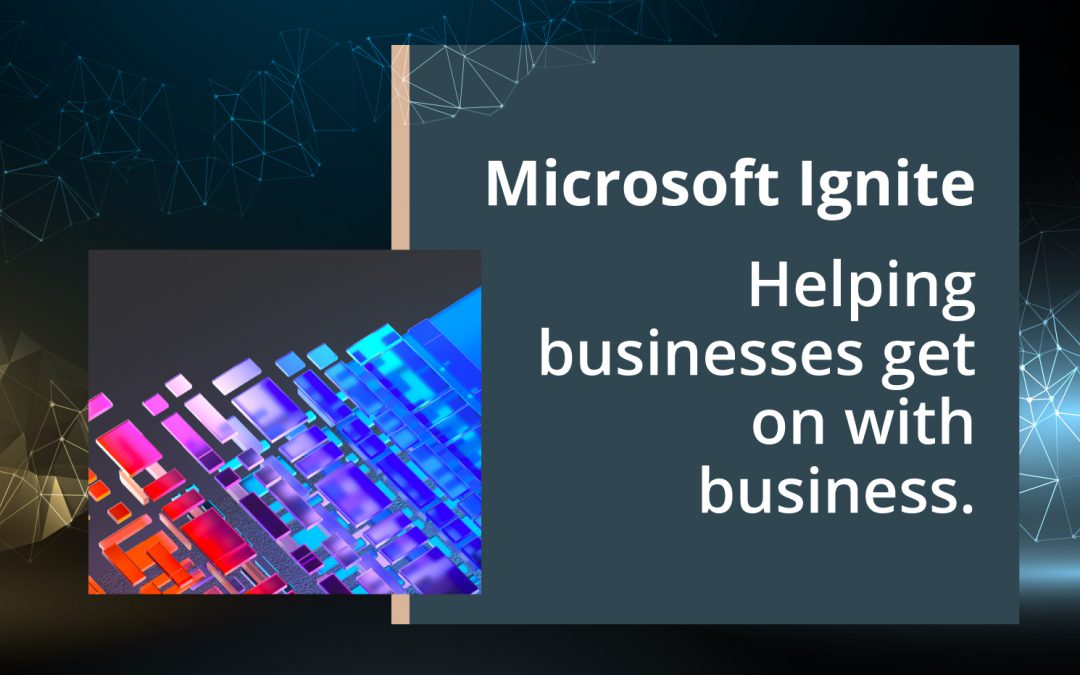
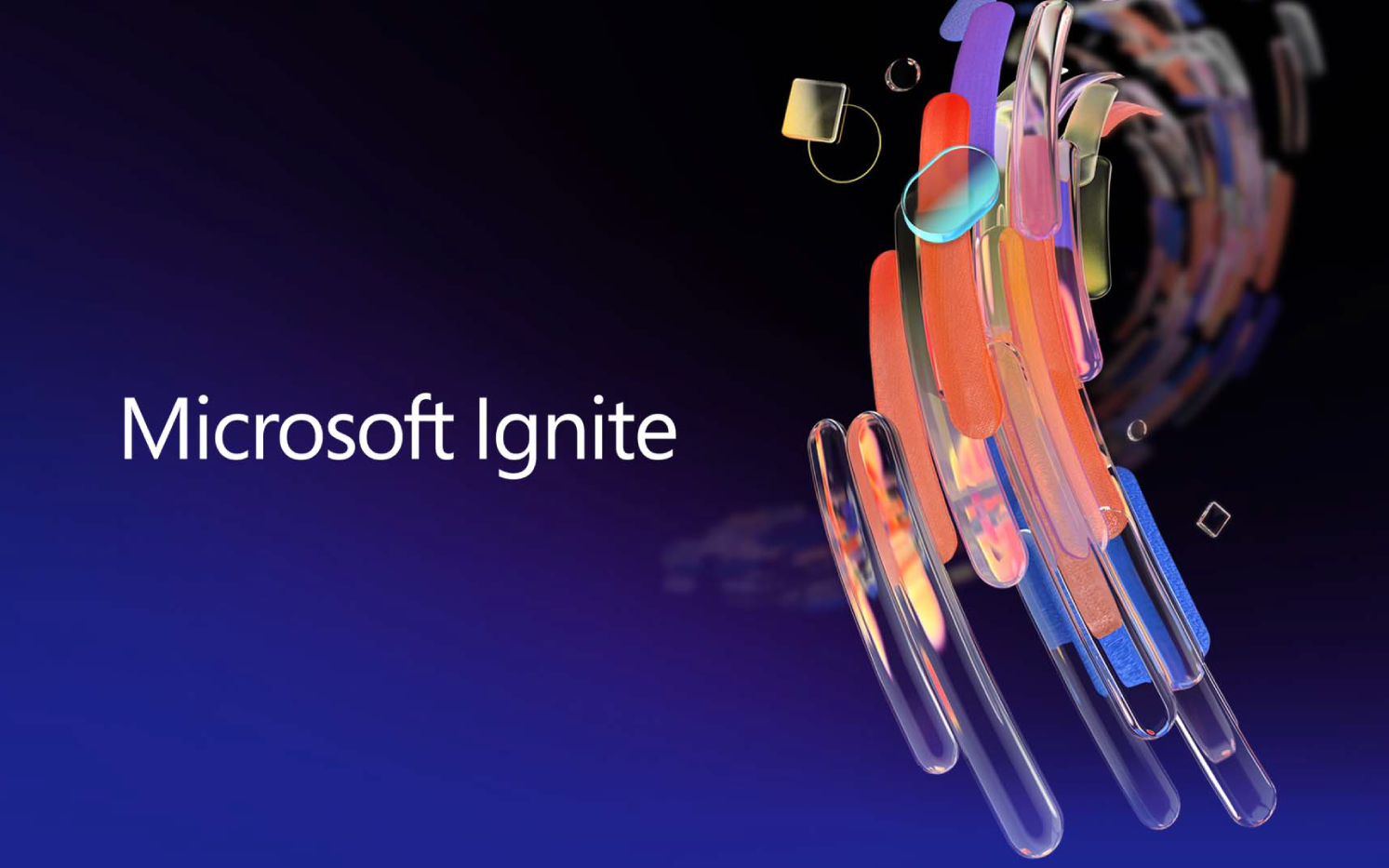
The Microsoft Ignite digital event was held between 2 and 4 November 2021. This event was the second to be held this year. Over 100,000 attendees from all over the world were expected to attend the November 2021 Microsoft Ignite event.
Microsoft showed up with many of its heavyweights to present the company’s newest services offerings. Here are a few new services that Microsoft either has already implemented or will implement soon.
Industry-specific cloud services.

The company also announced some industry-specific services. One of these is the Microsoft Cloud for Manufacturing. Some smart factories can generate 1 petabyte of data each day. This data can be precious if harnessed correctly. Still, most companies use less than 1 percent of their data to generate new services or business models.
The Microsoft Cloud for Manufacturing connects the intelligent, integrated cloud, and edge capabilities of the Microsoft stack to essential manufacturing processes. It connects your staff, assets, workflow, and business processes to enable you to build a more robust manufacturing business.
Another industry-specific offering announced by Microsoft is the Microsoft Cloud for Financial Services. The Microsoft Cloud for Financial Services incorporates Microsoft Azure, Microsoft 365, Microsoft Dynamics 365, and Microsoft Power Platform with unique features designed to support the financial services industry.
According to Microsoft, the Microsoft Cloud for Financial Services “was also designed for even the most complex control frameworks and regulatory requirements facing the industry, with [their] multi-layered security, comprehensive compliance, and trust commitments build-in”.
Microsoft Cloud for Financial Services aims to enhance customer and employee experiences, combat financial crimes, and manage security and compliance.
Microsoft also released the Microsoft Cloud for Nonprofit. This tool is built for roles unique to the nonprofit sector like fundraisers, program managers, and volunteer managers. Microsoft Cloud for Nonprofit assists role players to better engage with supporters, manage data, and design and deliver programs.
Microsoft Cloud for Sustainability assists organizations pursue and achieve their sustainability goals. The tool enables organizations to record, report, and reduce their carbon emissions.
Microsoft Cloud for Healthcare also received new updates that will enhance patient experiences, frontline worker collaboration, and care coordination.
New features for Microsoft Dynamics 365.
Dynamics 365 also received new features to assist businesses and their employees in navigating the new hybrid world. These features revolve around enhancing connectivity and streamlining communication and collaboration.
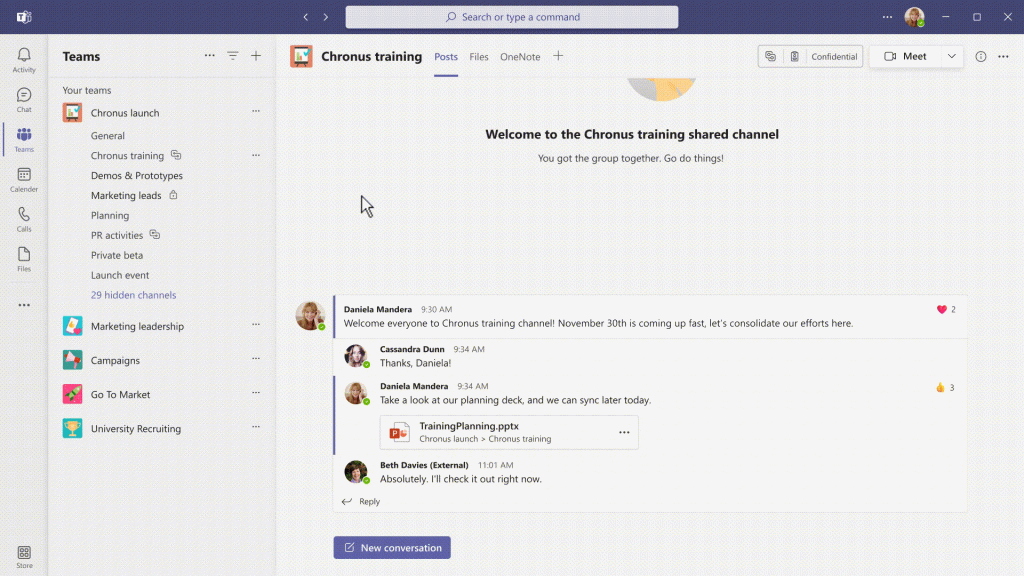
Collaborative apps for Microsoft Dynamics 365, Power Platform, Office 365, and Teams.
Updates to Dynamics 365 that are currently in preview will allow organizations to “operate as one business, everywhere.” Dynamics 365 and teams promote accessibility to business data. That means relevant information gets to the persons who need it most in order to make informed business decisions.
These new features give sales teams access to experts in your organization. This will allow your sales team to build informed proposals that address your customers’ needs. Sales teams can invite anyone in your company to collaborate with them via a Teams chat or channel. They could also make use of the “chat now” pop-up feature in Dynamics 365 or use the inbound/outbound digital voice feature.
The new collaborative features encourage real-time engagement. Collaborators can see who is working on a project with them. The Dynamics 365 apps also make it easy for individuals to contact those who are collaborating with them. These communication options include calls, chats, and scheduling meetings.
Microsoft Customer Experience Platform.
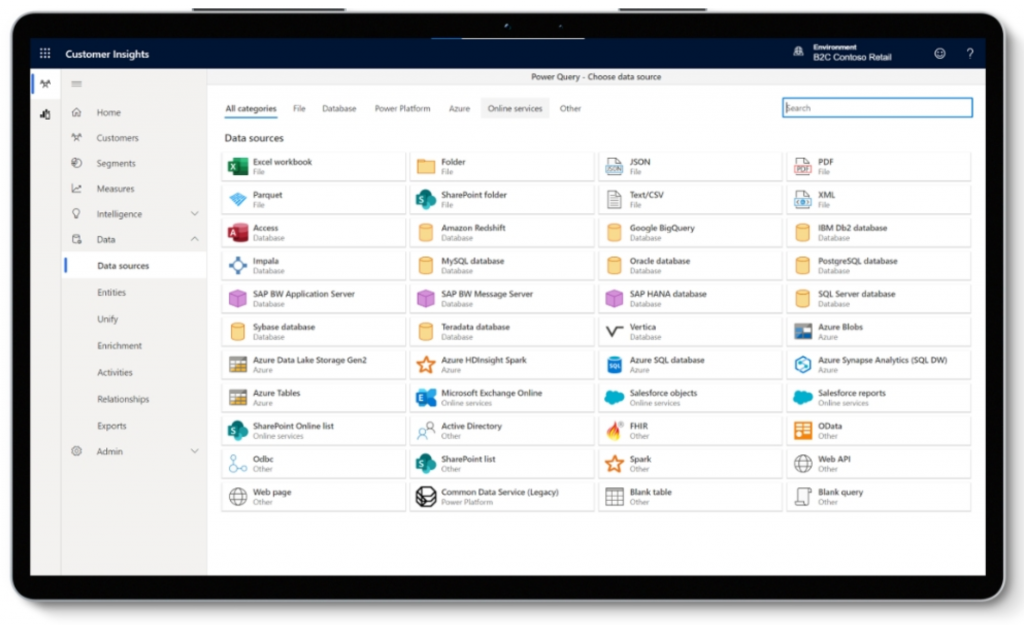
The Microsoft Customer Experience Platform allows your business to harness your customer data to create more personalized customer journeys. “With a deep understanding of customers and rich, out-of-the-box insights, organizations can now understand and predict intent to deliver the right content on the right channel and I the right moment.”
The Consent-enabled Customer Data Platform (CDP) (currently in preview) permits your chief data officer to use consent data in the consumer platform. This can help your business construct complete customer profiles while protecting their data.
The business-to-business CDP merges customer data from various sources. This includes CRM tools, email, websites, social networks, partner systems, and even point-of-sales.
In addition to this, AI content creation features automatically generate content snippers that can be used as the starting point for customer emails. This simplifies segment creation and enhances targeting to specific audiences.
Microsoft Dynamics Supply Chain Management.
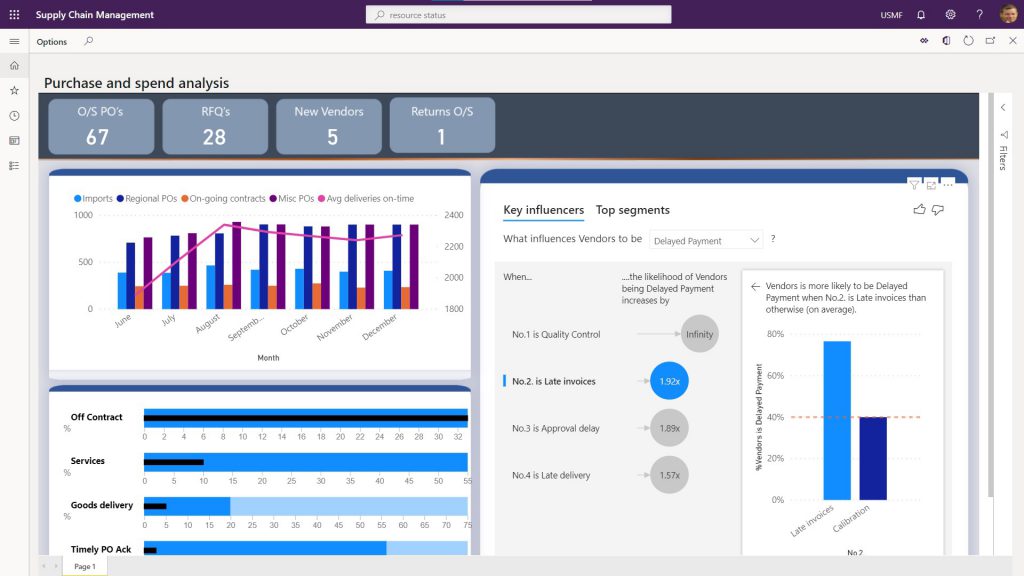
Microsoft Dynamics 365 Supply Chain Management can help you to “predict demand shifts, supply constraints, and equipment downtime by eliminating siloed Manufacturing Execution Systems (MES) to improve visibility of the production floor”.
More than that, Microsoft has added a priority-based feature (in preview) to the planning optimization engine in Dynamics 365 Supply Chain management. This helps to avoid out-of-stock situations. This feature automatically calculates which high-demand stock needs to be replenished based on outstanding orders, current stock levels, and projected inventory. This automation can streamline a company’s supply chain management processes.
Microsoft Dynamics 365 Customer Service voice channel.
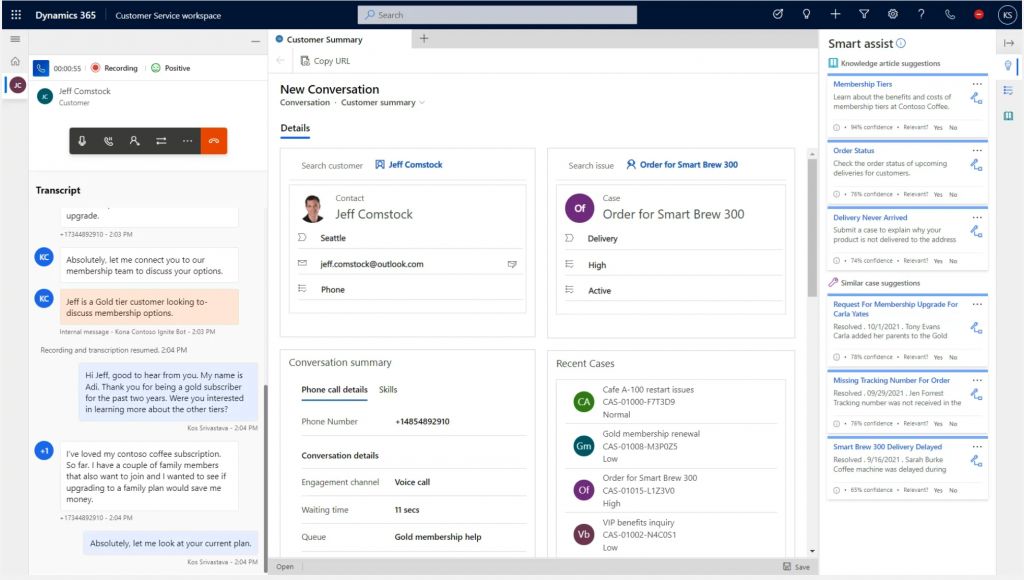
Customer service solutions revealed during the Microsoft Ignite event include the Microsoft Dynamics 365 Customer Service voice channel. According to Microsoft, “this addition to the existing omnichannel capabilities leverages the power of Microsoft Teams to bring traditional Contact Centre as a Service (CCaaS), Unified Communications as a Service (UCaaS), and Customer Engagement Center (CEC) under a single, integrated customer service Software as a Service (SaaS) solution with Dynamics 365 Customer Service”.
The Microsoft Ignite event revealed a smorgasbord of exciting new features that encourage more effective and efficient collaboration and business processes, helping your business get on with its business.
Transform your business
The page you requested could not be found. Try refining your search, or use the navigation above to locate the post.
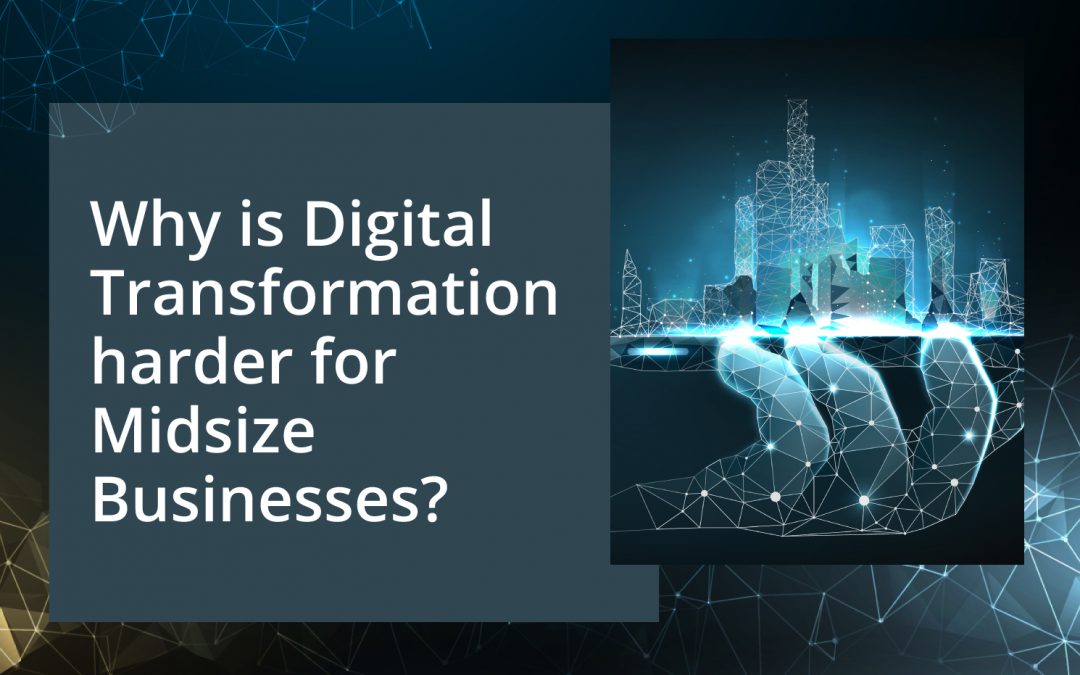

At first, many business owners thought the digital age was nothing more than a flash-in-the-pan fad. Years later, almost all had accepted that it was absolutely necessary to support real-world business efforts – perhaps a website and a little social media marketing. Today, this supportive role has again faded into insignificance. To compete in the digital age, you need to be digital, not simply do digital.
In a nutshell, digital transformation strategies are those moves a business makes that are driven by technology, with the goal of implementing new systems, onboarding new talent, and adopting new processes to improve both their operations and their interactions with customers.
As if the already speedy shift to online channels weren’t happening fast enough, the COVID-19 pandemic has accelerated the trend as businesses struggle to remain customer-centric in their approach, even if seeing them in person is no longer an option.
Three key areas are often identified as being at the core of a successful transformation:

Are you making use of the Internet of Things? Blockchain? Artificial intelligence? Understanding how new technologies can contribute to a digitally enabled business is essential, but many businesses of all sizes are also bogged down by legacy technologies – old that doesn’t always gel with the new – that makes integrating these systems increasingly complex on an SME budget.

Data is all around us, but does your business possess the insight it needs to translate it into actionable strategies? Creating actionable insights that enable the clean and efficient collection of data, not to mention its interpretation into actionable insights, is no easy task. It requires skills that few SMEs have an appetite for, despite the investment it represents.

Digital transformation can be achieved incrementally, but it does require a mindset that encompasses the entire business. One of its chief goals is to dissolve silos between processes and departments. To be truly transformative rather than merely useful, digital thinking and long-term planning must be the goal from end to end.

But digital transformation for the SME is not always as simple as it seems. Although – as the old metaphor suggests – a large ship (read: a big, established company) takes more time and energy to change direction, they do have an enormous advantage over SMEs when it comes to digital innovation: resources. With large budgets and usually entrenched partners already working on aspects of digitisation – from HR and payroll to marketing and CRM Solutions, enabling digital strategies seems to come so much easier to those who already seem to claim the lion’s share of the pie.
But access to resources and high-end services is a tiny part of the overall puzzle. The real reasons that so many SMEs struggle to reach digital maturity lies in the business operationally, and the people at the top. Digital transformation efforts require a culture shift that must be led from the top. Large businesses will have a CIO, CTO, or innovation officer leading the charge, but such specialised executive roles are more rare in SMEs. From products and services to the very business model itself at all stops in the supply chain, manufacturing to marketing to customer experience, building the omnichannel experience that customers expect needs to be led with intention and built into processes throughout the business.
Through technology, businesses are constantly making improvements to the way they compete in a difficult marketplace, but true digital transformation cannot be achieved through technology alone. A complete overhaul of processes, leadership and culture is necessary to become a truly digital organisation able to enhance their operations and revolutionise the way they work.
Transform your business
The page you requested could not be found. Try refining your search, or use the navigation above to locate the post.
Recent Comments